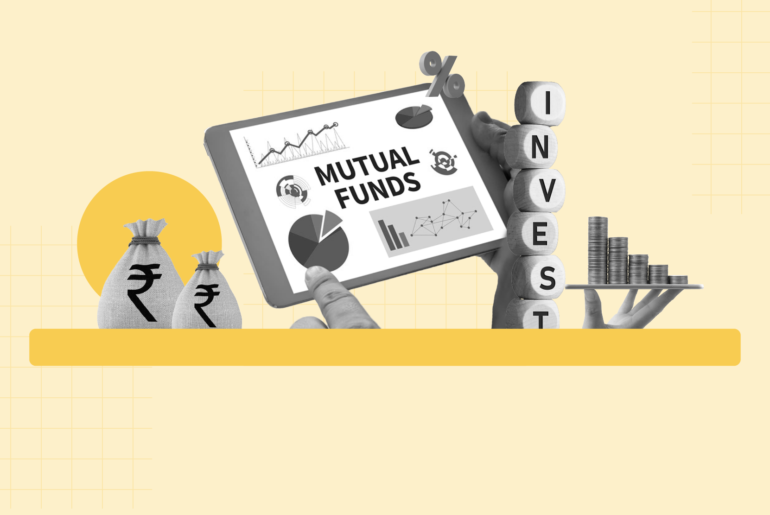Last Updated on Oct 2, 2023 by Anjali Chourasiya
Retirement is an important phase of one’s life. It is when most people stop working and rely on their savings and investments to support their lifestyle. Investing for retirement allows individuals to take advantage of compound interest and accumulate wealth. Mutual funds are one of the investments that can help with your retirement goals. In this article, let’s look at the best mutual funds for retirement and their taxation.
Table of Contents
Best mutual funds for retirement
| Name | AUM (Rs. in cr.) | 5Y CAGR (%) | 3Y CAGR (%) | Expense Ratio (%) | Volatility (%) | Minimum Lumpsum (Rs.) |
| HDFC Retirement Savings Fund-Equity Plan | 3,570.07 | 20.09 | 32.25 | 0.74 | 8.47 | 100.00 |
| HDFC Retirement Savings Fund-Hybrid-Equity Plan | 1,126.60 | 15.79 | 22.77 | 0.96 | 6.55 | 100.00 |
| Tata Retirement Sav Fund – Prog Plan | 1,491.78 | 14.57 | 18.29 | 0.62 | 9.28 | 5,000.00 |
| Tata Retirement Sav Fund – Mod Plan | 1,741.29 | 13.63 | 17.19 | 0.65 | 8.10 | 5,000.00 |
| Nippon India Retirement Fund-Wealth Creation | 2,601.26 | 11.72 | 25.73 | 0.97 | 10.20 | 500.00 |
| HDFC Retirement Savings Fund-Hybrid-Debt Plan | 154.90 | 9.39 | 10.12 | 0.99 | 2.64 | 100.00 |
| Nippon India Retirement Fund-Income Generation | 173.45 | 9.01 | 8.09 | 1.05 | 3.64 | 500.00 |
| Franklin India Pension Plan | 466.77 | 8.95 | 11.23 | 1.49 | 4.08 | 500.00 |
| Tata Retirement Sav Fund – Cons Plan | 165.87 | 8.92 | 8.39 | 0.96 | 3.00 | 5,000.00 |
Note: The information is dated 1st October 2023. Below are the parameters used to filter the top retirement-oriented mutual funds in India for 2023 on the Tickertape Mutual Fund Screener.
- Category > Others > Solution Oriented – Retirement Fund
- Plan: Growth
- 5-yr CAGR: Set from highest to lowest.
Details of top 3 retirement mutual funds
1. HDFC Retirement Savings Fund – Equity Plan
This was launched on 25th February 2016 by HDFC Mutual Funds. As of 1st October 2023, HDFC Retirement Savings Fund – Equity Plan has an NAV of Rs. 41.88. It has a 3-yr CAGR (Compound Annual Growth Rate) of 32.25%. The minimum investment amount is Rs. 100. To learn more about the fund’s performance and compare it with its peers, click here.
2. HDFC Retirement Savings Fund – Hybrid – Equity Plan
This fund by HDFC Mutual Funds was launched on 25th February 2016. As of 1st October 2023, HDFC Retirement Savings Fund – Hybrid – Equity Plan has an NAV of Rs. 33.81. It has a 3-yr CAGR of 22.77%. The minimum investment amount is Rs. 100. Click here to learn about its performance and fund managers.
3. Tata Retirement Savings Fund – Prog Plan
Tata Mutual Fund launched this fund on 1st November 2011. As of 1st October 2023, Tata Retirement Savings Fund – Prog Plan has an NAV of Rs. 57.98. It has a 3-yr CAGR of 18.29%. The minimum investment amount is Rs. 5,000. To know about the fund’s portfolio and tax implications, click here.
Why mutual funds for retirement?
- Compared to traditional pension plans, mutual funds for retirement are considered more flexible as there are no withdrawal limits.
- Mutual funds are more transparent than pension plans. You can get all the information about a fund easily on their websites.
- Retirement mutual funds are considered tax-efficient compared to other retirement plans.
Who should invest in mutual funds for retirement?
Retirement mutual funds come under a special category, ‘Solution Oriented Schemes’. SEBI introduced it to help investors plan their investments in a disciplined manner. The mutual funds for retirement come with a fixed tenure of 5-yr or more. This ensures that the investor stays invested long and achieves the investment goal.
Anyone who wants to save funds for a financially secure life post-retirement can choose retirement mutual funds. There is no minimum age eligibility; hence, it is also suitable for investors in their 20s. Also, retirement mutual funds invest in low-risk investments. Hence, investors with a medium to low-risk appetite can consider these. However, it is better to understand the workings of mutual funds in general before taking a call.
Taxation on mutual funds for retirement
As per Section 80CCC, investment in retirement mutual funds is allowed for a deduction of up to Rs. 1.5 lakh. However, the returns on these funds are taxable. If the investor chooses the returns as an annuity, taxes are applicable as per the individual’s income slab.
Conclusion
There are several investment avenues available, and retirement mutual funds are one of those. Before investing, ensure that you are well aware of the scheme and it aligns with your investment objectives. Use Tickertape Mutual Fund Screener to find the best mutual funds for retirement. You can also Watchlist those funds to keep an eye on the performance. It’s never too late to invest for retirement. Start exploring your options now.
FAQs
Are mutual funds good for retirement?
Retirement is considered an important phase of one’s life. It is the time to relax and live a financially peaceful life. Hence, achieving financial security for your post-retirement phase is essential. For that, you need to consider savings or investments. Mutual funds for retirement are one of the investment options. These are medium to low-risk options that can provide good returns. However, you need to understand the workings of mutual funds and pick the right one according to your investment objectives and risk appetite.
How to select mutual funds for retirement?
SEBI has introduced a special category in mutual funds called ‘Solution Oriented Schemes’, which includes children’s funds and retirement funds. The funds under the retirement scheme contain growth funds that can help with retirement goals. Using Tickertape Mutual Fund Screener, you can select this category and sort the funds according to your preferred parameters like AUM, 1-yr returns, 5-yr CAGR, 3-yr CAGR, etc.
- Top AI Stocks in India: Best Artificial Intelligence Companies on NSE (2025) - Mar 19, 2025
- Best Debt Mutual Funds in NSE India Based on 5Y CAGR - Mar 17, 2025
- List of Best Fundamentally Strong Stocks in India - Mar 13, 2025




